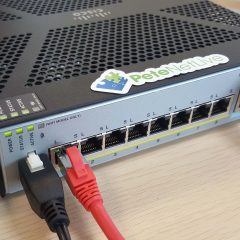Cisco Router – Configure NAT (NAT Overload)
NAT Overload KB ID 0000971 Problem NAT is the process of taking one or more IP addresses and translating it/them into different IP addresses. You may require your router to translate all your internal IP addresses to your public (ISP allocated) IP address. To do that we use a process called NAT Overload. Solution : Nat Overload 1. Connect to the router, and got to enable mode, then global configuration mode. PetesRouter#configure...
Juniper JUNOS SRX NAT – Static ‘One-to-One’
SRX NAT KB ID 0000995 Problem Setting up ‘Static NAT’ is the process of taking one of your ‘spare’ public IP addresses, and permanently mapping that public IP to a private IP address on your network. In the example above I want to give my web sever which has an internal IP address of 192.168.1.10/24, the public IP address of 1.1.1.5/24. So if someone out on the Internet wants to view my website, they can...
Windows Remote VPN no DNS
VPN no DNS KB ID 0001402 Problem I’ve been setting up a VPN solution on the test bench as I’m looking at Always On VPN. When I noticed that I had a problem with my remote VPN connections on Windows. They would connect fine but I could not resolve any FQDNs for my domain? VPN no DNS Solution By default, all (Windows) VPN connections are ‘Force Tunnel’ (this means they have the option ‘Use default gateway...
Cisco ASA Static (One to One) NAT Translation
KB ID 0000691 Problem Note: This is for Cisco ASA 5500, 5500-x, and Cisco Firepower devices running ASA Code. If you have a spare/available public IP address you can statically map that IP address to one of your network hosts, (i.e. for a mail server, or a web server, that needs public access). This is commonly referred to as a ‘Static NAT’, or a ‘One to One translation’. Where all traffic destined for public...
Cisco ASA – DNS Doctoring
KB ID 0001113 Problem Cisco DNS doctoring is a process that intercepts a DNS response packet as it comes back into the network, and changes the IP address in the response. Why Would you want to do this? Well lets say you have a web server on your network, and its public IP is 111.111.111.111, and on your LAN its internal IP address is 192.168.1.100, its public DNS name, (or URL) is www.yoursite.com. When a user types www.yoursite.com...




